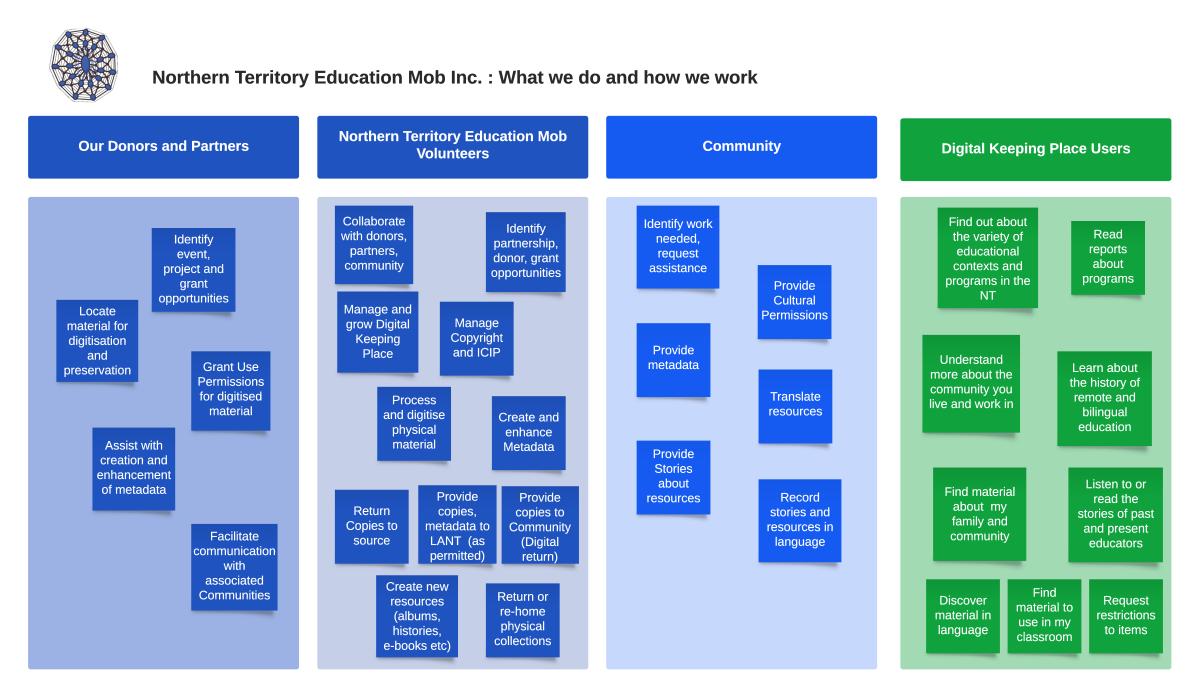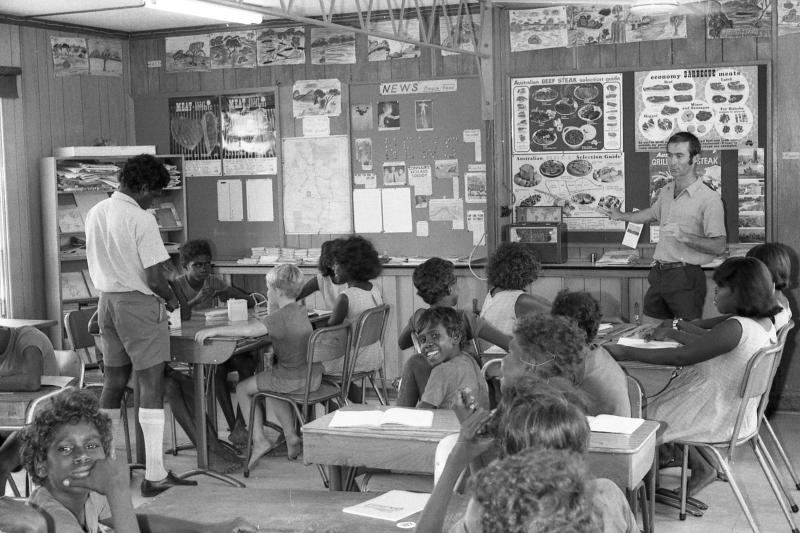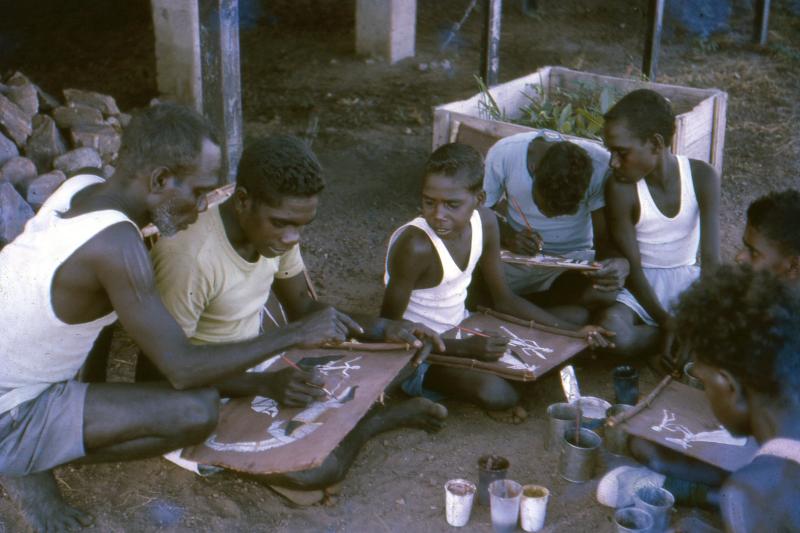What we do
We work to gather and strengthen knowledge about the efforts of educators, education spaces and curricula and locate it in one Digital Keeping Place, accessible to all. The content of the Digital Keeping Place shares the history, richness and diversity of Aboriginal Education in the NT, community by community, program by program. It is a rich resource for classroom learning and teacher study.
We digitise, return, and use the records and information revealed through our efforts to recognise and preserve community, cultural, linguistic and education related knowledge and make these accessible in a respectful way. Working with others, we facilitate learning, development, preservation and celebration.
How we work
We work in partnership with Aboriginal and Torres Strait Islander people, organisations, services, communities, schools and educators (past and present), respectful of Indigenous Cultural and Intellectual Property protocols. We collaborate with individuals, school communities, organisations, and keeping institutions.
We work to build trust with our partners and collaborators.
Everyone has an important role to play. The diagram below explains how we work together.

(Download a printable version of this diagram)
For more information about how we process donated collections go to
Our work programme:
Digitisation, Preservation and our Digital Keeping Place
The Digitisation and Preservation Program is the key to our work. Material that we collect and digitise grows the Northern Territory Education Mob Digital Keeping Place, providing safe and respectful access for educators, students, community and family.
For more information go to Digital Keeping Place
Digital Return
We undertake digital return to community of material donated to us by our donors and collaborating collecting agencies. We often receive advice by word of mouth that a former teacher has records they want to return to a community. We are put in touch with the individual and let them know what we do and how we work.
We always commit to getting a digital copy of the records back to the donor AND the community the records are from BEFORE anything else happens to them. The donor can choose what they want to have happen their records after they are digitised. Sometimes the donor is happy to have them shared on Facebook. Sometimes it is not clear where the records are from and we use our Facebook page to give them back to family and community and to help with more information.
Copies of material in the collection are distributed to the relevant communities represented (digital repatriation) through various means. For each community the point of return may be one of the following locations:
- The school
- The art centre
- Another organisation that has a digital keeping place
- A key individuals in the community.
Copies of material that has been returned is preserved in our digital keeping place for long term access. Access permissions and metadata in the Digital Keeping Place are enhanced using information provided by community members. .
For more information about donating material to us and what we do with collections see Donate your collection.
Image

| Image

|
Celebrations and Anniversaries
We work with schools and communities who are holding celebrations and anniversaries. For more information see Anniversaries and Celebrations.
Creating new resources
We use the material in our digital repository to create new resources. Some examples of these are , Topic Albums and Theme Cards on our Digital Keeping Place, posters developed in collaboration with ATESOL NT and Batchelor Institute, and talking books in collaboration with the Catholic Education Office Northern Territory.
For more information see Partnerships, Collaborations and Projects.
Need more information?
If you need any more information about our work program